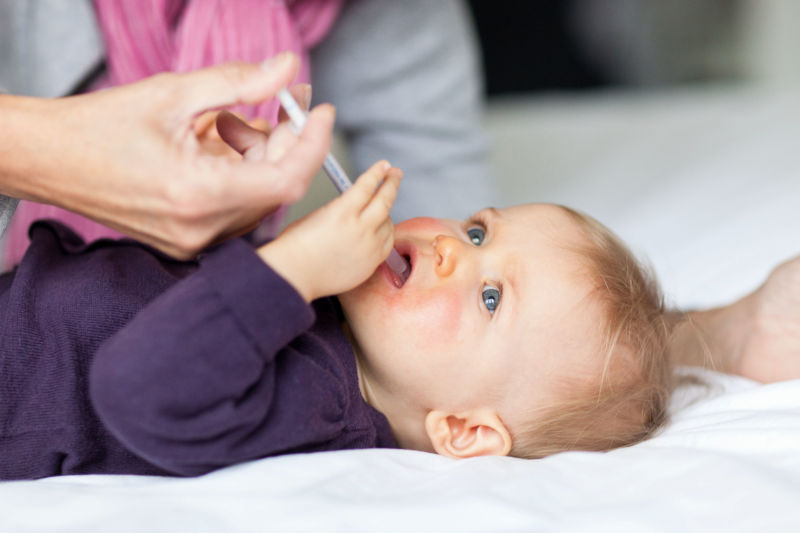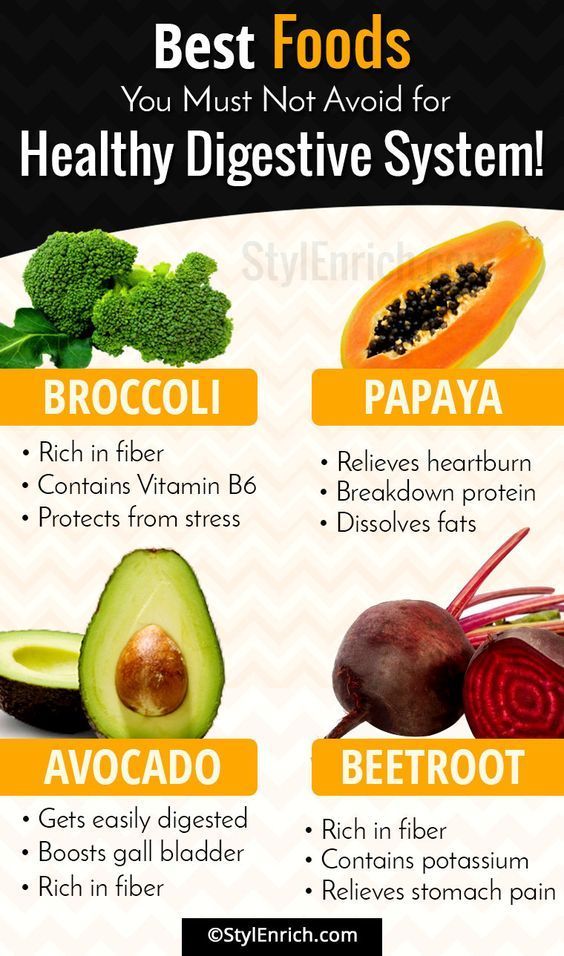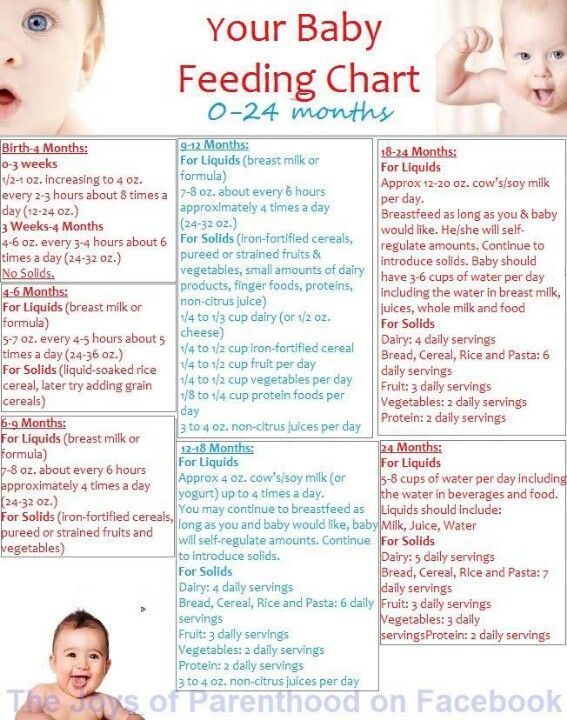Feeding baby mother having fever
Breastfeeding while mum or baby are sick
If you or your baby are unwell, you may wonder whether it’s safe to breastfeed. The good news is breastfeeding while sick can have many benefits for both of you – read on to find out more
Share this content
Did you know that if you breastfeed, your baby is less likely to get ill in the first place? While it won’t completely stop her becoming sick, breast milk’s protective properties mean breastfed babies tend to be unwell less often,1 and recover faster, than formula-fed babies.
Breast milk has antibacterial and antiviral elements.2 Depending on how long you breastfeed for, you’ll be lowering your baby’s risk of contracting colds and flu, ear and respiratory tract infections, sickness and diarrhoea.1 Scientists are even investigating breast milk’s potential for treating conditions ranging from conjunctivitis to cancer. 3,4
Should I breastfeed my sick infant?
Yes. Breastfeeding a sick baby gives her a great chance of a speedy recovery, as well as helping to comfort her. Your breast milk contains antibodies, white blood cells, stem cells and protective enzymes that fight infections and may help with healing.1,5,6 It also has a constantly adjusting balance of vitamins and nutrients, supporting her to get better as quickly as possible. And that means fewer sick days and visits to the doctor for both of you.7
“Breastfeeding provides everything your baby needs if she’s poorly – it’s her medicine as well as her food, fluid and comfort. It’s the best thing on the planet for her,” says Sarah Beeson, a UK-based health visitor and nurse.
Amazingly, the composition of your breast milk changes when your baby is ill. If you’re exposed to a bacterial or viral infection, your body makes antibodies to combat it; these are then transferred to your baby through your milk. 8 The levels of immunity-boosting cells, called leukocytes, in your milk also rise rapidly whenever your baby is unwell.5
8 The levels of immunity-boosting cells, called leukocytes, in your milk also rise rapidly whenever your baby is unwell.5
And because breast milk is very easy to digest, it’s also the ideal food for babies with upset tummies.
“My daughter contracted norovirus when she was 12 months old, and breast milk was the only thing she could keep down,” remembers Maya, mum of two, Spain. We had weaned naturally to one breastfeed a day at bedtime, but the supply-and-demand effect of breastfeeding her more often again was quite astonishing. Within 48 hours, I was at dairy levels of production! It saved my baby girl being put on a drip.”
Bear in mind that you may have to alter the way you breastfeed your baby while she is sick. For example, a baby with a cold may want to feed more often, but for shorter periods, both for comfort and because a blocked nose may make it harder to stay at the breast for long. If your baby has a stuffy nose she might also prefer to feed upright, so you could experiment with different breastfeeding positions.
What if my baby seems too unwell to breastfeed?
Sometimes when a baby is feeling really ill she may not have the appetite or energy to breastfeed. If you’re struggling to get her to feed, contact a healthcare professional, lactation consultant or breastfeeding specialist for advice to prevent her becoming dehydrated.
They may advise you to express some milk to feed to your baby from a syringe, cup, or other method that you’ve found requires the least effort from her to drink from. Expressing when you would normally breastfeed will also keep your milk supply steady.
If you have any concerns about your baby’s health or milk intake, always seek medical advice quickly.
Can I still breastfeed when sick?
It may be the last thing you feel like doing, but it’s best to keep breastfeeding through almost any common illness. If you have a cold or flu, fever, diarrhoea and vomiting, or mastitis, keep breastfeeding as normal. Your baby won’t catch the illness through your breast milk – in fact, it will contain antibodies to reduce her risk of getting the same bug.
“Not only is it safe, breastfeeding while sick is a good idea. Your baby is actually the person least likely to fall ill with your tummy upset or cold, as she has already been in close contact with you and is getting a daily dose of those protective antibodies from your milk,” says Sarah Beeson.
However, being sick and continuing to breastfeed can be extremely tiring. You’ll need to look after yourself so you can look after your baby. Keep your fluid levels up, eat when you can, and remember your body needs extra rest. Book a seat on your sofa and snuggle up with your baby for a few days, and ask family or friends to help with caring for your baby when possible so you can focus on recovering.
“Don’t worry about your breast milk supply – you will keep producing it. Just don’t stop breastfeeding abruptly as you’ll run the risk of getting mastitis,” Sarah adds.
Good hygiene is important to minimise the risk of spreading the illness. Wash your hands with soap before and after feeding your baby, preparing and eating food, going to the toilet or changing nappies. Catch coughs and sneezes in a tissue, or in the crook of your elbow (not your hands) if you don’t have one with you, and always wash or sanitise your hands after coughing, sneezing or blowing your nose.
Catch coughs and sneezes in a tissue, or in the crook of your elbow (not your hands) if you don’t have one with you, and always wash or sanitise your hands after coughing, sneezing or blowing your nose.
Is it OK to take medicines while breastfeeding?
It’s fine to take paracetamol, ibuprofen and some antibiotics while breastfeeding,9,10 as long as you discuss it with a healthcare professional and follow the dosing instructions. Remember ibuprofen has contraindications for asthmatic mums.
Previously mums were advised to avoid aspirin, but a recent study indicated low doses are likely to be safe while breastfeeding.11 However, high doses have been linked to a rare but serious condition called Reye’s syndrome in infants,12 so it’s best to discuss the use of aspirin with your healthcare professional.
Stronger prescription painkillers, such as codeine and tramadol, aren’t recommended.10 Since guidelines and recommendations are continually updated, your healthcare professional or pharmacist will be able to give you more information on specific medicines if you have any concerns.
Some cold, flu and cough remedies contain decongestants or expectorants, and these could reduce your milk supply. Steer clear of those that have phenylephrine, phenylpropanolamine or guaifenesin listed in their ingredients.9 Medicines that cause drowsiness are best avoided when you’re breastfeeding too.
“Check the packaging and if you’re still uncertain, ask a healthcare professional,” Sarah advises. “And if your baby was born prematurely, at a low birth weight, or has a medical condition, you should check before taking any medications while breastfeeding – even paracetamol.
“Whenever you go to a doctor or a pharmacist, for any reason, always make it clear you’re breastfeeding and ask for the best option,” she adds.
How about long-term medication?
If you’re on long-term medication for diabetes, asthma, depression or any other chronic health condition, the benefits of breastfeeding can outweigh the risks. “Breastfeeding is often still possible with nearly all illnesses, except for a few rare conditions,” says Sarah. “You’ll be familiar with your regular medications and should have an opportunity to discuss them with your doctor or specialist while pregnant. There is guidance available for all healthcare professionals on the safety of different drugs.” In any event, you should discuss this issue with your doctor or healthcare professional.
“You’ll be familiar with your regular medications and should have an opportunity to discuss them with your doctor or specialist while pregnant. There is guidance available for all healthcare professionals on the safety of different drugs.” In any event, you should discuss this issue with your doctor or healthcare professional.
I was on a high dose of medication for my epilepsy but breastfeeding was still possible,” says Nicola, mum of one, UK. “I was monitored by my neurologist to get a balance between safety for my son and keeping my risk of a seizure low. Seizures can be triggered by lack of sleep and I was feeding day and night, but I took good care of myself, as did my husband. It’s been a positive experience.”
What if I have to go into hospital?
Whether you need planned or emergency treatment, there are ways to ensure your baby continues to receive the benefits of breast milk, and that you can continue breastfeeding once discharged.
“Express and freeze your breast milk so a caregiver can feed it to your baby. Have a practice ahead of time, and make sure you tell healthcare professionals you are a breastfeeding mum when you’re booked in, and again when you’re admitted,” suggests Sarah.
Have a practice ahead of time, and make sure you tell healthcare professionals you are a breastfeeding mum when you’re booked in, and again when you’re admitted,” suggests Sarah.
“If your baby is small, they may let you have her with you. Ask whether there’s a hospital lactation consultant or breastfeeding specialist you can see too – they’ll be a great advocate for you, especially if you’re on a general ward. If it’s an emergency, make sure the healthcare professionals know you have a baby – it’s not something they might think about otherwise.”
Having surgery under local or general anaesthetic doesn’t mean you need to stop breastfeeding, or to ‘pump and dump’ your breast milk. By the time you feel well enough to hold your baby after an operation, the amount of anaesthetic in your breast milk will be minimal and it should nearly always be safe to breastfeed.10 However, you should seek the advice of a healthcare professional, lactation consultant or breastfeeding specialist in any of these circumstances.
Should I ever not breastfeed?
There are a few situations in which it’s safest to stop breastfeeding temporarily and pump and discard your milk to keep up your supply until treatment is complete. These include if you have radiotherapy or chemotherapy for cancer, herpes lesions on your breast, or infections such as tuberculosis, measles or septicaemia, that could be transmitted through your milk.13,14 Seek expert medical advice about your condition and whether it’s best to continue or interrupt breastfeeding.
References
1 Victora CG et al. Breastfeeding in the 21st century: epidemiology, mechanisms, and lifelong effect. Lancet. 2016;387(10017):475-490.
2 Lönnerdal B. Bioactive proteins in breast milk. J Paediatr Child Health. 2013;49 Suppl 1:1-7.
3 Australian Breastfeeding Association [Internet]. Topical treatment with breastmilk: randomised trials. [cited 2018 Apr 4]. Available from https://www.breastfeeding.asn.au/tropical-treatment-with-breastmilk-randomised-trials
4 Ho JCS et al. HAMLET–A protein-lipid complex with broad tumoricidal activity. Biochem Biophys Res Commun. 2017;482(3):454-458.
HAMLET–A protein-lipid complex with broad tumoricidal activity. Biochem Biophys Res Commun. 2017;482(3):454-458.
5 Hassiotou F et al. Maternal and infant infections stimulate a rapid leukocyte response in breastmilk. Clin Transl Immunology. 2013;2(4):e3.
6 Hassiotou F, Hartmann PE. At the dawn of a new discovery: the potential of breast milk stem cells. Adv Nutr. 2014;5(6):770-778.
7 Ladomenou F et al. Protective effect of exclusive breastfeeding against infections during infancy: a prospective study. Arch Dis Child. 2010;95(12):1004-1008.
8 Hanson LA. Breastfeeding provides passive and likely long-lasting active immunity. Ann Allergy Asthma Immunol. 1998;81(6):523-533.
9 Hale TW, Rowe HE. Medications and Mothers' Milk 2017. 17th ed. New York, USA: Springer Publishing Company; 2017. 1095 p.
10 Reece-Stremtan S et al. ABM Clinical Protocol# 15: Analgesia and anesthesia for the breastfeeding mother, Revised 2017. Breastfeed Med. 2017;12(9):500-506.
11 Datta P et al. Transfer of low dose aspirin into human milk. J Hum Lact. 2017;33(2):296-299.
12 Morello O. Safe in breastfeeding [Internet]. Italy: Orfeo Morello; 2016. Aspirin: Can I take aspirin while breastfeeding? [cited 2018 Apr 4]. Available from: https://www.safeinbreastfeeding.com/aspirin/
13 Lamounier JA et al. Recommendations for breastfeeding during maternal infections. J Pediatr (Rio J). 2004;80(5 Suppl):181-188.
14 Hema M et al., Management of newborn infant born to mother suffering from tuberculosis: Current recommendations & gaps in knowledge. Indian J Med Res. 2014;140(1):32-39.
Should you breastfeed your baby when you have a fever?
By -
TIMESOFINDIA.COM
Created: Jun 24, 2020, 12:00 IST
facebooktwitterPintrest
No one likes getting sick. But for a new mom, it's even more problematic as she has to breastfeed her little one.
But for a new mom, it's even more problematic as she has to breastfeed her little one.
As per experts, it is safe to feed a baby during fever. The chances of you passing the fever to your baby through breastfeeding are very rare. In fact, your breastmilk carries antibodies that your body is making to fight the infection. These same antibodies can help your baby too. In fact, chances of your baby getting infected from you are more than getting infected by the breastmilk.
Medication during breastfeeding
Just like in your pregnancy, you have to careful about the medicines you take. It is said Paracetamol and ibuprofen are usually safe but one should not have ibuprofen if they have asthma or ulcer. One should also not take Aspirin as it can be harmful to your baby when passed through the breastmilk.
If your fever doesn't go away in three days, it's best to visit your doctor along with your baby. Ask your doctor to prescribe you medicines that will not be harmful to the baby. If your doctor asks you not to feed your baby while on medication, you can pump and dump your milk.
If your doctor asks you not to feed your baby while on medication, you can pump and dump your milk.
Pump and dump means pumping your breasts and then dumping that milk. This is important to be done if you are not allowed to breastfeed as it helps keep up your milk supply for nursing your baby in future.
You can give your baby formula milk after consulting the doctor. Sometimes, it is allowed to feed the baby right before you have to take medication. Ask your doctor if that is applicable in your case.
Verdict
So, unless you have specifically been told not to breastfeed the baby, keep doing it. Not breastfeeding can lead to fuller breasts, which can cause mastitis and worsen your fever.
Stopping breastfeeding for a longer period of time can also reduce the production of the breastmilk, which can make it difficult for your baby.
Precautions to take to reduce the risk of passing on the fever to baby
- Wash or sanitize your hands frequently, especially before picking and breastfeeding the baby.
- Cover your nose and mouth while coughing and sneezing.
- Throw the used tissues straight into the dustbin.
- Do not touch your baby's pacifier.
- Do not kiss the baby when ill.
End of the article
Visual Stories
All you need to know about Times Brand Icons West Bengal 2022
Featured in Parenting
Tips to deal with toddler’s public tantrum
19 celebs who became parents in 2022
Foods pregnant women should eat in winters
"Do parents have a favorite child?" Kids answer!
Sudha Murty’s guide on romance for youngsters
Brain foods to make your child smarter
Ways to help kids deal with disappointments
Here's how to travel with your baby like a pro
Viral: Girl dresses up as Wednesday Addams
- Pregnancy Due Date Calculator This calculator tells you the estimated date of your delivery.

- Ovulation Calculator Calculate and understand your fertility window
LATEST VIDEOS
Parenting
- How to help your kids cope with divorce00:53
13 people from 2022 India can ‘blindly’ follow
Seven things seven polls of 2022 said about Indian politics
When Pele was a bigger brand than Brazil
Four things India needs to lead the world
Lactostasis in nursing: symptoms, treatment, signs
Obstetrician-gynecologist, reproductologist, member of the Russian Association of Human Reproduction
Perevoznikova
Ekaterina Mikhailovna
Experience 13 years
Obstetrician-gynecologist
Make an appointment
Laktostasis - a delay in the separation of milk in women during lactation. The cause of this phenomenon in most cases is a blockage or spasm of the milky passages. Other factors can provoke milk retention in the ducts of the mammary glands: wearing tight underwear, injuries, abrupt cessation of breastfeeding. nine0003
The cause of this phenomenon in most cases is a blockage or spasm of the milky passages. Other factors can provoke milk retention in the ducts of the mammary glands: wearing tight underwear, injuries, abrupt cessation of breastfeeding. nine0003
Causes of pathology
The development of lactostasis occurs against the background of a decrease in the patency of the excretory duct of the mammary gland with excessive milk production. The milky passages are prone to spasms, which cause their obturation. Anatomical features of the structure of the mammary glands of patients have a significant impact on the likelihood of developing lactostasis:
- flat teat;
- sagging breasts;
- narrowed milk ducts. nine0022
Often, pathology develops due to an abrupt cessation of lactation or difficulty feeding. Cracks may form on the nipples. Similarly, the likelihood of developing lactostasis in a nursing girl is affected by:
- incorrect attachment of the infant to the breast;
- insufficient sucking activity of the child;
- tight underwear;
- falling asleep on the stomach;
- chest hypothermia; nine0022
- stressful situations.

Some women experience blockage of the milky passages due to excessive physical exertion after the birth of a child.
Symptoms of pathology
Symptoms of lactostasis in a nursing mother are diverse. The primary sign of pathology is the compaction of the area of \u200b\u200bthe mammary gland. Patients complain of fullness and a feeling of heaviness in the chest. The impossibility of outflow of milk over a long period of time leads to an increase in local temperature and a change in the pigmentation of the skin. In the absence of medical assistance, the girl's condition worsens. Body temperature with advanced lactostasis rises to 38-39degrees.
The pain syndrome is not always accompanied by the formation of a subcutaneous seal. Attempting to feed a baby can lead to a short-term relief of symptoms. The focus of stagnation remains mobile, the affected area can change location and increase.
Diagnostic measures
Diagnosis of lactostasis is not difficult. An obstetrician or gynecologist examines the patient and palpation determines the localization of the seal in the chest. The girl is encouraged to track changes in body temperature. If there are signs of an inflammatory process, the patient is prescribed tests. Their data allows doctors to develop a strategy for drug treatment that will not affect the quality of the milk received by the child. nine0003
An obstetrician or gynecologist examines the patient and palpation determines the localization of the seal in the chest. The girl is encouraged to track changes in body temperature. If there are signs of an inflammatory process, the patient is prescribed tests. Their data allows doctors to develop a strategy for drug treatment that will not affect the quality of the milk received by the child. nine0003
Treatment
The main task of all therapeutic manipulations is to create conditions for emptying the mammary glands. Moderate warming and light breast massage contribute to the normalization of the state of the milky passages. Girls should follow the regime and devote the necessary amount of time to rest. Relatives of patients should maintain a conflict-free home environment. Nursing mothers are advised not to sleep on their back or stomach, but on their side.
Expressing milk is an effective way to prevent lactostasis at the first sign of milk retention. The procedure may be painful, but it should be systematically repeated until the symptoms of the pathology disappear completely. A side effect of pumping is a burning sensation in the chest after the opening of the milky passage. nine0003
A side effect of pumping is a burning sensation in the chest after the opening of the milky passage. nine0003
Prolonged lactostasis is a reason to see a doctor. A visit to the clinic is required for persistent pain, fever, hyperemia. Patients may experience breast inflammation. In this case, any warming procedures are contraindicated, as they will accelerate the progression of the infection.
Self-treatment of lactostasis is not recommended for mothers who are breastfeeding for the first time. Erroneous actions can lead to a complicated course of lactostasis and a complete loss of milk. nine0003
Complication
The most severe complication of lactostasis is mastitis - inflammation of the breast tissue. Patients face increasing pain syndrome. Later, fever and fever in the affected area join it. The skin of the mammary glands is covered with red stripes. Milk contains impurities of blood and purulent discharge.
The occurrence of mastitis is promoted by hypothermia (lactation in a cool room or in a draft) or overheating (hot shower, sauna) of the patient. Running lactostasis, complicated by mastitis, often causes the formation of a breast abscess. nine0003
Running lactostasis, complicated by mastitis, often causes the formation of a breast abscess. nine0003
Preventive measures
Prevention of lactostasis involves the observance of several recommendations by the nursing mother. The infant should be fed regularly (but no more than once every two hours), and milk residues should be carefully expressed using a manual or automatic breast pump.
Avoid wearing tight underwear. Limiting physical activity and stress during lactation significantly reduces the likelihood of lactostasis. An important role is given to the diet - it must include fresh vegetables and fruits. nine0003
When symptoms of lactostasis appear, you should not refuse to feed the baby. With a long delay in the outflow of milk, you should consult a doctor. Self-administration of any drugs is not recommended. It should be borne in mind that the affected mammary gland after recovery may produce less milk. Over time, the secretory function will be restored in full.
FAQ
Why should you not stop breastfeeding with lactostasis? nine0003
Refusal of lactation can provoke the development of complications, the most severe of which remains mastitis. Inflammatory processes in the mammary glands cause the formation of abscesses. Their treatment is a long and painful process that will not allow the patient to continue breastfeeding the baby.
What drugs are allowed for girls in the treatment of lactostasis?
Treatment of uncomplicated lactostasis does not involve the use of drug therapy. Girls need to express milk with a breast pump. An important role in the expansion of the lactiferous passages is assigned to the manual effect on the mammary gland. Massaging the affected area helps to normalize the outflow of milk. Taking anti-inflammatory drugs is justified in the development of mastitis. Antibiotics help eliminate the possibility of developing an abscess, the treatment of which will require surgical intervention. nineOl000 One of the most common problems breastfeeding moms face is blocked milk ducts, also known as milk stasis or lactostasis. What sensations arise with a clogged milk duct? A sensitive seal appears in the chest, and slight pain and discomfort may occur. nine0105
We'll cover the most common questions about this problem and provide you with all the important information about blocked ducts, from symptoms of blocked ducts in the breast to treatments and tips to prevent the condition.
If you need more information, ask someone else.
Signs of blocked milk duct
What is blocked milk duct and how is it different from other breast conditions like mastitis? Blockage of the milk duct, also known as milk stasis or lactostasis, is a condition in which a milk clot forms in the breast, preventing milk from flowing out of the duct. A painful lump forms in the chest, and there may be a feeling of discomfort around it. nine0105
Common symptoms of blockage of the breast duct are:
- pain in a certain area of the breast;
- painful lump in the mammary gland the size of a pea or more;
- slight increase in temperature in the area of blockage;
- sometimes a small white bubble forms on the nipple.
In a nutshell, duct blockage is the formation of a localized lump in the chest that causes discomfort, in the absence of any other signs of illness or fever. If there is a fever or flu-like symptoms and if the chest feels hot to the touch, it may be mastitis. nine0105
More information on symptoms and treatment for mastitis can be found here.
Causes of blockage of the breast duct
Blockage of the milk duct can occur for several reasons:
- incomplete flow of milk from the breast during feeding;
- incorrect attachment of the child, due to which he cannot fully suckle the breast;
- engorgement;
- excess milk production; nine0022
- abrupt cessation of breastfeeding;
- putting pressure on the mammary gland: for example, wearing tight clothing that compresses the chest.
Blockage of the milk duct is usually the result of incomplete emptying of the breast or excessive pressure on the breast for a long period of time.
How to remove blockage of the milk duct?
To prevent a breast infection, it is important to find a way to clear the blocked milk duct as soon as possible. nine0003
Here's what to do if your milk duct is blocked:
- Continue to breastfeed your baby. If the milk duct is blocked, you should continue to feed the baby and try to do it so that the baby sucks out all the milk. You can also try breastfeeding a baby with a blocked duct every two hours. This will help keep the milk flowing and possibly clear blockages. Continuous stimulation of the flow of milk is the key to eliminating blockage of the duct.
These bra pads help prevent milk stains on clothes while breastfeeding. Their porous top layer and excellent absorbency will help keep clothes dry and comfortable.
- Massage and express between feeds. Before each feeding, it is recommended that the mother massage the breast with stroking movements from the periphery of the breast to the nipple.
This stimulates the flow of milk even before the start of feeding. After breastfeeding, a mother can express any milk left in a breast with a blocked duct to ensure that the ducts are completely emptied. Stimulating the flow of milk can help prevent blockages in the milk ducts, but there are times when a mother cannot be with her baby during breastfeeding. To stimulate the flow of milk in such situations, it is very important to express milk manually. nine0105
Check out these manual breast pumps for expressing milk anywhere, anytime.
- Attach the baby correctly to the breast. Attaching the baby to the breast in such a way that his chin is directed towards the blocked duct can help solve the problem. Such attachment to the breast will help the baby, when sucking, empty exactly the area of \u200b\u200bthe mammary gland where there is a blockage. You can try to apply the baby in different ways, so that it is more convenient for him to extract all the milk from different parts of the breast.
nine0022
- Apply warm and cold compresses. As compresses, you can use a towel, as well as thermal pads 2 in 1. It is recommended to apply a warm thermal pad to the area of the clogged duct several times a day, while doing a light massage. Breast discomfort after feedings can be alleviated somewhat by using cooled thermal pads.
- Wear comfortable, loose-fitting clothing. One of the causes of blockage of the milk ducts is excessive pressure on the mammary glands for an extended period of time.
This pressure can be exerted by tight clothing or bras, so it is important to wear loose clothing to clear a blocked duct. Sometimes mothers also notice clogged pores on their breasts - loose clothing and a bra will also help to cope with this problem. nine0022
- Tight clothing encourages more intense perspiration and prevents sweat from evaporating, thus clogging pores. Moms should wear loose-fitting clothing to clear clogged pores and clear blocked milk ducts.
If following these tips fails to open the milk duct, it is recommended that you contact your doctor or lactation consultant to prevent infection.
How to prevent clogged milk ducts? nine0115
Every mother would like to avoid the problem of blocked milk ducts altogether. No one will give a 100% guarantee against blockage of the milk ducts, but you can try to prevent it by using a few useful tips.
- After each feeding, check that there is no feeling of fullness and discomfort in the chest.
If it is, then it is necessary to additionally express milk, until a feeling of comfort.
- Feed your baby regularly for as long and as often as he wants
- Express milk between feedings if you experience discomfort and fullness in your breasts.
- Place the baby on the breast so that there is no undue pressure on the breast.
- Wear loose, comfortable clothing and bralettes.
When should I seek professional help?
When a blockage of the milk duct occurs, the mother should not panic. Despite the discomfort and pain, this condition is quite normal and usually goes away if treated immediately. nine0105
If you want to know how to clear a blocked milk duct, or if you are feeling a blocked milk duct, you should seek help from your doctor.
Find out more about other common breastfeeding problems and how to deal with them.
Articles & tips from Philips Avent
Links
The New Breastfeeding Guide for Mothers 3rd Edition (2017)
Baby+ app
Download the app and track your child's development and growth with trackers, and keep those special moments forever.











